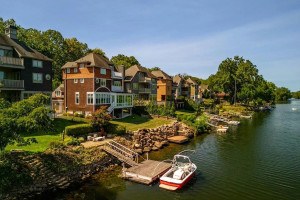Independence Mall Rises from the Dead
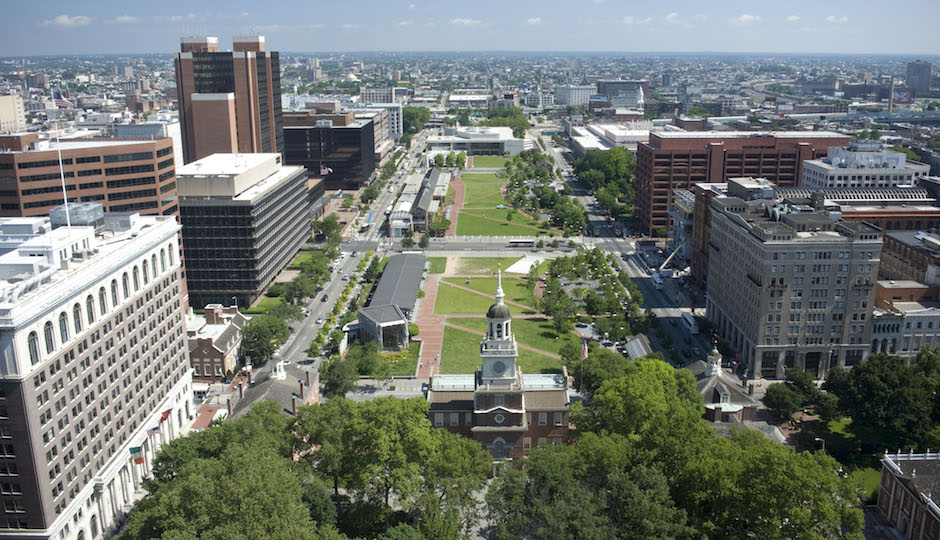
Independence Mall in 2011. The mall’s redesign brought people back to it and has stimulated a wave of redevelopment that has given new life to the buildings that surround it. | Photo: Courtesy National Park Service
Even as the Center City District (CCD) and its parent, the Central Philadelphia Development Corporation (CPDC), sound warnings every now and then that Center City’s current good fortune remains vulnerable to economic shifts, the organizations still find plenty of cause for celebration, or at least tub-thumping, in the space between the rivers from Vine to Pine.
At the most recent CPDC meeting at the Union League on June 27th, the tub-thumping concerned the subject of reattaching Independence Mall to the city that surrounds it.
Center City District Executive Director Paul Levy opened the meeting by describing the wound opened by the mall. “The mall was the creation of the urban renewal movement of the 1950s,” he said. At the time, the area around the mall was the center of the city’s garment industry: “Today we call it the maker community, but back then we called it sweatshops,” he added. Many of the 500 buildings that were razed to create the mall housed garment-industry firms, some of which were moved to the Callowhill Street area by the brand-new Philadelphia Industrial Development Corporation starting in 1958.
What took their place, Levy continued, was a space that was “symmetrical but not well used.” Part of the reason for the lack of use was the mall itself, but another main contributor was the government, corporate and institutional offices that rose on its edges.
Adding amenities to the edges brings people to the Mall
A redesign of the Mall by the Olin Partnership beginning in 2000 brought buildings back to the site and removed the symmetry, making the space both more welcoming and better trafficked. Now developers are moving to transform the unwelcoming spaces surrounding Independence Mall and Independence Square into livelier all-day environments that will build on the redesign’s momentum through a variety of adaptive reuse projects.
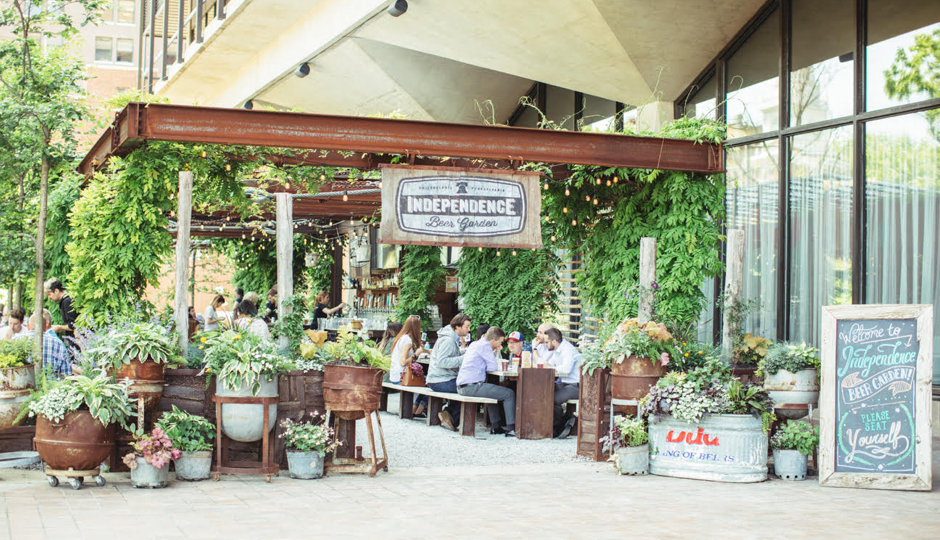
The Independence Beer Garden on the terrace of the Dow Chemical building. | Photo: Neal Santos
One of those projects involved the addition of public amenities to the Dow Chemical (nee Rohm & Haas) building at the southwest corner of 6th and Market. Keystone Property Group brought the modernist landmark in 2013 and immediately faced a dilemma: “I had to pay so much for it that I had to find other uses for it besides office space,” said CEO Bill Glazer.
Noting how the Comcast Center plaza and Center City Sips drew people to outdoor spaces, he decided that one of the best things he could do was put in something similar that would draw residents and workers from east of Broad Street to the building’s raised terrace. A huddle with rising star restaurateur Michael Schulson produced the Independence Beer Garden, which was a hit from the day it opened: “On the day it opened in July [2015], it was raining,” he said. “A thousand people showed up. The next night, it was better weather, and 2,500 people showed up, and they weren’t tourists. They were locals and millennials.
“That showed there was a screaming demand for this type of development along Market East.”
Office development follows the residents
That development, said MRP Realty’s Charles McGrath, has been driven by the residential population boom in the general vicinity.
“What’s unusual about Philadelphia is that residential development has led the way,” he said. “Usually, office leads the way, then people want to live near the offices.”
(Actually, research performed by sociologist William H. Whyte in the 1980s showed that intra-metropolitan office relocations were most often driven by a desire to shorten the CEO’s commute. Today’s residential-driven development boom is similarly fueled by businesses suddenly discovering that they need to put their offices in the places where their workers want to live in order to shorten their commutes.)
MRP’s own investments in the Independence Mall area have followed this pattern. Its first building was a residential conversion at 4th and Walnut streets. Now it’s tackling the task of bringing the historic Philadelphia Bourse back to the future.
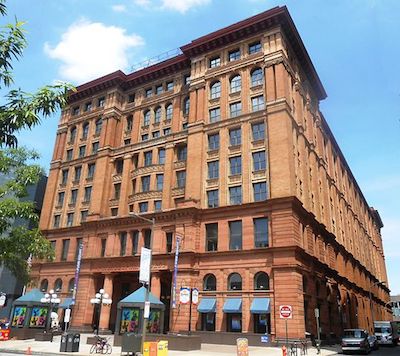
The Bourse’s new owner plans to restore the trading floor’s original character while keeping it a public retail space – an amenity that MRP Realty hopes will lure small office tenants. | Photo: ProfReader via Wikimedia Commons, licensed under CC-BY-SA-3.0
“It’s a phenomenal building with strong bones,” he said, and the key to reviving it for a new era is respecting its roots as the first commodities exchange in the United States. After acquiring the building from the Kaiserman Company, McGrath said he was disappointed to find not a historic trading floor but “an indoor enclosed mall” instead.
McGrath said that what the Bourse should look like is San Francisco’s Ferry Building, which opened around the same time as the Bourse building. Making it over in this fashion meant that MRP had to “buy the building right” — that is, not pay so much as to make historic restoration with mixed uses unworkable. The street-level commercial component, he said, is what will make the offices work: “If we overdeliver on the amenities, we can deliver the office space.”
MRP wants to attract smaller firms to the Bourse office space, and getting plenty of them to sign leases is key to making the makeover work: “The more rents we can get, the better amenities we can put on the ground floor,” McGrath said.
One of the firms that has already been lured to this side of Broad Street is this publication, which will be taking up new digs in The Curtis at 6th and Walnut streets next month. Glazer described securing the lease with parent Metrocorp as “a real opportunity” in the question-and-answer period that followed the presentations and noted that “they wanted all the things you have on the East Side [of Center City]: historic properties, the sorts of things you find in Downtown Brooklyn.” All of these, including two upscale pub/restaurants and apartments, are either already present or coming soon to the former Curtis Publishing Company headquarters. Metrocorp’s move to the Curtis also reconnects the building with its heritage: it’s not only a National Historic Landmark but also a Historic Site in American Journalism as designated by the Society of Professional Journalists.
The Visitors Center serves as an anchor
And speaking of history, the building that brought people back to the mall’s second block is also getting retooled to handle more visitors and accommodate more events. Independence Visitors Center head Jim Cuorato noted that the center currently handles some 2.5 million visitors a year, most of them domestic but a sizable minority from abroad — 20 percent, rising as high as 25 percent in the fall.
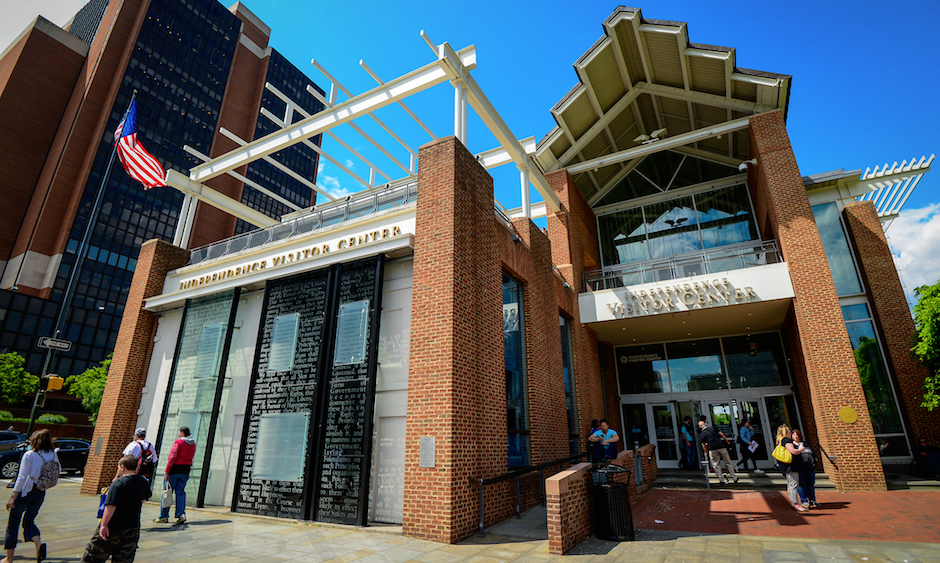
The Independence Visitors Center is undergoing an expansion that will allow it to serve visitors better and earn more revenue in the process. | Photo: M. Kennedy for Visit Philadelphia
“We are the official visitors center for the Philadelphia region,” he said, “so we also promote attractions in the surrounding counties.” And people still want the personal service and advice the center offers: “People often plan their entire trips beforehand online, but you’d be surprised how many people just walk into the center and say, ‘I just got here. I want to see the Liberty Bell, but what else can I do?'”
The center’s current expansion project, the “Visitor Experience Improvement Project,” is “about making the visitor experience pleasant and positive,” he said. “We want people to feel good here because it enhances the quality of their visit.” But the project will also enhance the center’s ability to earn revenue to support its operations. By moving the restrooms — “the only public restrooms in Independence National Historic Park,” he noted — to a new addition on the building’s east side, the center will be able to expand its gift shop space by 50 percent, and the gift shop is the center’s single largest revenue source. The addition will also expand the size of the second-floor terrace overlooking the mall, which is often rented for fundraisers and special events.
The other renovations will add a second visitors information desk to the center — one will offer information and tickets for park attractions and the other information about regional attractions — and modernize the center’s two theaters. One will offer an orientation film and the other an interactive touch-screen display. A formal trip-planning area at the center’s north end will round out the visitors center upgrades.
Cuorato said that $12 million of the project’s $15 million total cost is already in hand. The first phase is already well on the way to completion; work on the second phase will begin by the end of the year. The project is being done in phases in order for the center to remain open throughout the project period.
The Independence Mall makeover, then, has unleashed the potential for the area to become a true live/work/play hub and a stimulus for retail development to boot by finally activating what had been a dead space. “I like to think of this as prime waterfront property,” said Glazer. “The city was built and designed around five squares, and in Philadelphia, they’re not building any more of these next great spaces. Franklin and Logan squares are cut off” from their surroundings. “Center Square has City Hall, and Rittenhouse Square grew up to become the tony center of the city. That leaves only one Next Great Opportunity in the city.”
And the competition to exploit it will be fierce, he suggested: “If you can find a site that can be made into apartments that Tom [Scannapieco] doesn’t buy, you can do very well.”
